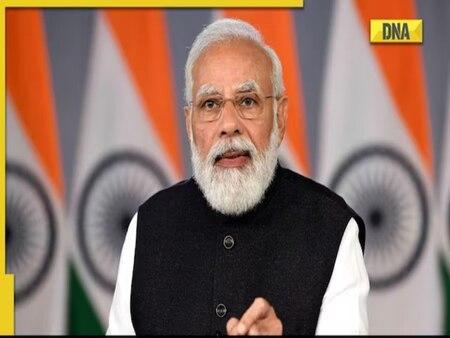
As the nation eagerly awaits the swearing-in ceremony of Prime Minister Narendra Modi, scheduled for 7.15 pm today at the prestigious Rashtrapati Bhavan, it’s apt to delve into the remunerations and benefits accorded to India’s highest officials: the President, Vice-President, and Prime Minister.
**President**
The President of India holds the highest constitutional office in the country. In 2018, a significant revision occurred in the President’s salary, which was increased from ₹1.50 lakh per month to ₹5 lakh per month. This adjustment was announced by the then Finance Minister, Arun Jaitley, during his budget speech.
**Perks Granted to the President**:
1. **Travel**: The President can travel across the country free of cost via air, rail, or steamer. He or she is entitled to bring one companion whose travel expenses will also be covered.
2. **Medical Services**: The President receives free medical services and attendance at all times, ensuring premium healthcare.
3. **Official Residence**: The President is provided with a furnished, rent-free home. Additionally, this residence comes with two free landlines, a mobile phone, a team of five personal staff members, and maintenance services.
4. **Spouse Benefits**: The spouse of the President also benefits from free lifetime medical services.
The President’s position is not only prestigious but also comprehensively cushioned with substantial perks to ensure a dignified tenure.
**Vice President**
The Vice President acts as the second-highest constitutional office in India, presiding over the Rajya Sabha. In an effort to bring parity and fairness, Finance Minister Arun Jaitley also announced a raise in the Vice President’s salary from ₹1.25 lakh to ₹4 lakh per month.
**Perks Provided to the Vice President**:
1. **Accommodation**: The Vice President is allotted a free official residence.
2. **Security**: Personal security is provided to ensure the Vice President’s safety.
3. **Medical Care**: Free medical care is one of the primary perks.
4. **Travel**: Free train and air travel for official purposes are covered.
5.
. **Communication**: The Vice President benefits from complimentary landline and mobile phone services.
6. **Staff**: A dedicated staff to assist in day-to-day operations is provided.
The Vice President’s role, while demanding, is supported by extensive facilities to aid in the discharge of duties.
**Prime Minister**
The Prime Minister of India, undoubtedly the most significant role in terms of executive power, receives a monthly salary of ₹1.66 lakh. However, the perks associated with the position vastly augment the financial package.
**Perks Granted to the Prime Minister**:
1. **Personal Staff**: The Prime Minister has a dedicated team of staff, including the Special Protection Group (SPG), which ensures comprehensive security.
2. **Transportation**: For diplomatic and formal visits, the Prime Minister has access to an exclusive aircraft, Air India One.
3. **Official Residence**: The Prime Minister resides at the official premises on 7, Race Course Road, furnished and equipped at the state’s expense.
Beyond the tangible benefits, the Prime Minister’s role is supplemented by privileges that facilitate efficient governance and security.
## Additional Insights
### **Historical Context**:
The revision of salaries for these top officials has been influenced by considerations of the responsibilities they shoulder. The revisions are reflective of the cost of living adjustments and the degree of duty they must perform. Historically, these positions have seen periodical increments to stay current with economic conditions.
### **Comparison with Global Counterparts**:
When compared globally, the salaries of India’s top officials are moderate. For instance, the President of the United States earns an annual salary of $400,000, a figure substantially higher than that of the Indian President. Similarly, the remuneration for the UK Prime Minister stands at £161,401 annually, which is roughly ₹1.7 crore, aligning closely with the Indian Prime Minister’s annual salary.
### **Criticism and Justification**:
There has been ongoing debate regarding the salaries of these top officials. Proponents argue that the high responsibilities and the need for financial independence are justifications for the revisions. Critics, however, often point to the disparity between these salaries and the average income of ordinary citizens, urging for more modest increases.
### **Impact of Perks**:
The non-salary perks constitute a significant part of the compensation, effectively doubling or tripling the worth of the official packages. These perks are designed to ensure that the officials can perform their duties without financial concerns and are well-protected and supported.
## **Conclusion**:
As Prime Minister Modi prepares for his swearing-in ceremony, taking stock of the remunerations and benefits provided to India’s top officials offers invaluable insights into the recognition and support afforded to these roles. These salaries and perks are structured to ensure that the President, Vice-President, and Prime Minister can execute their duties with efficiency and dignity, reflecting the respect and trust bestowed upon them by the nation.












